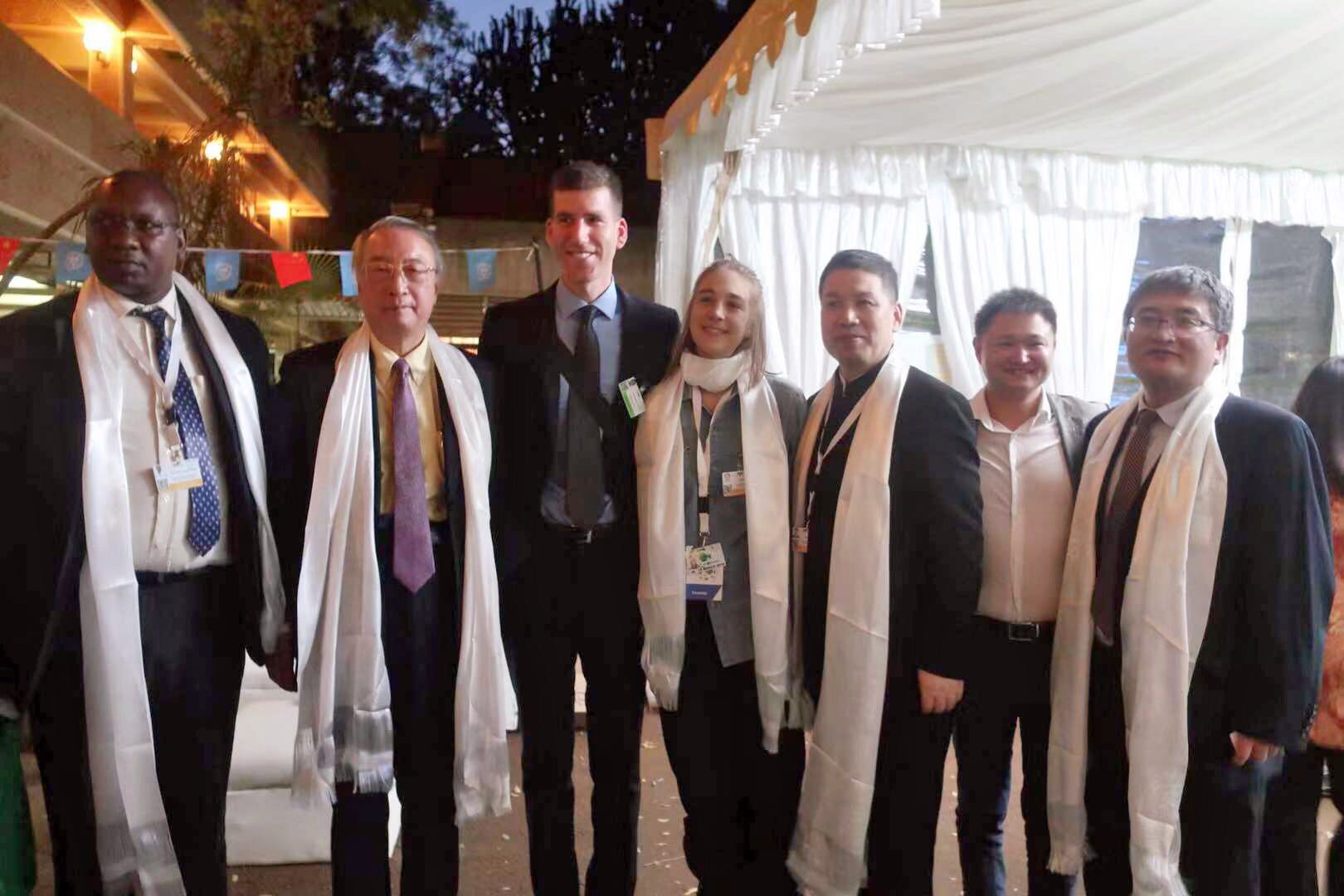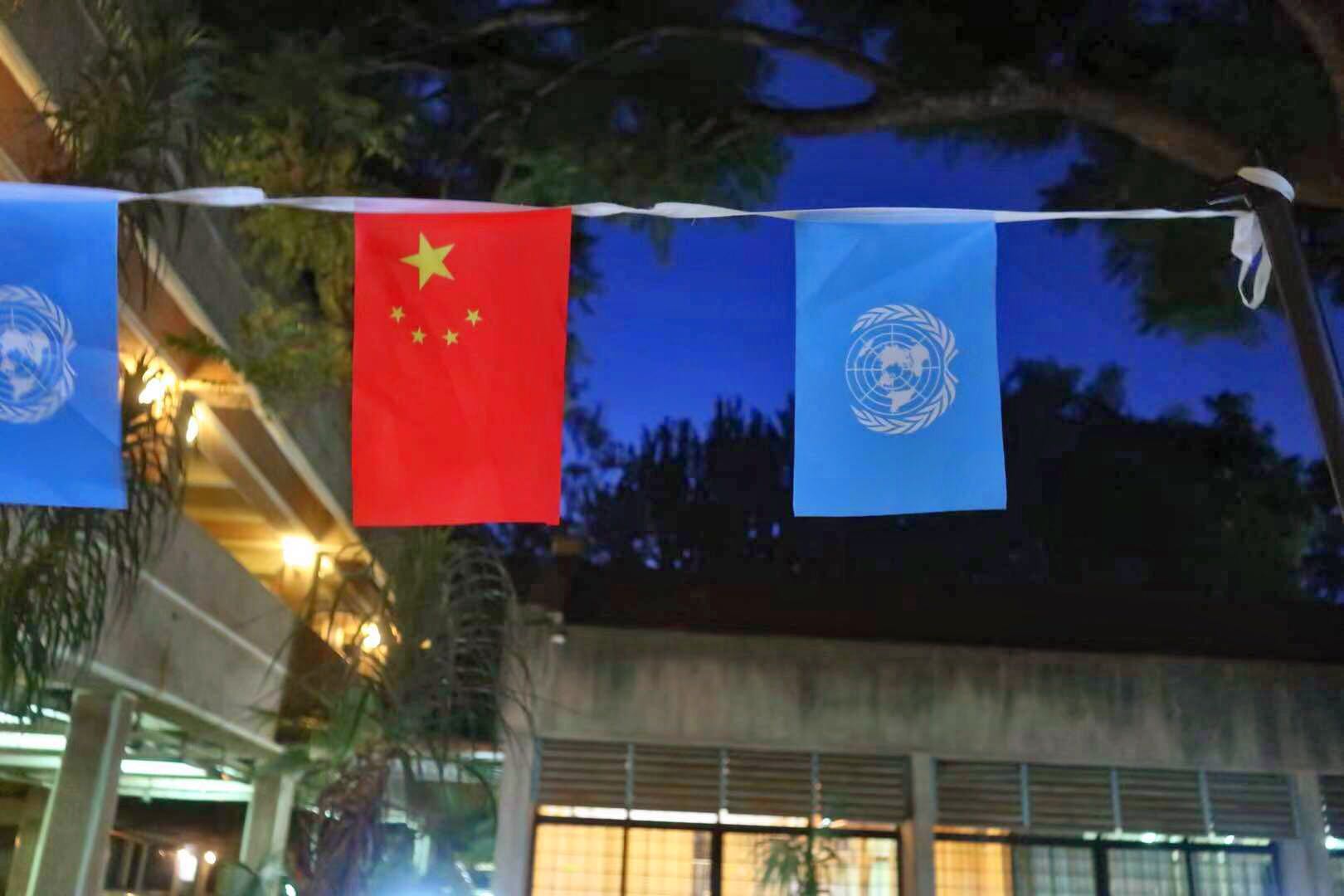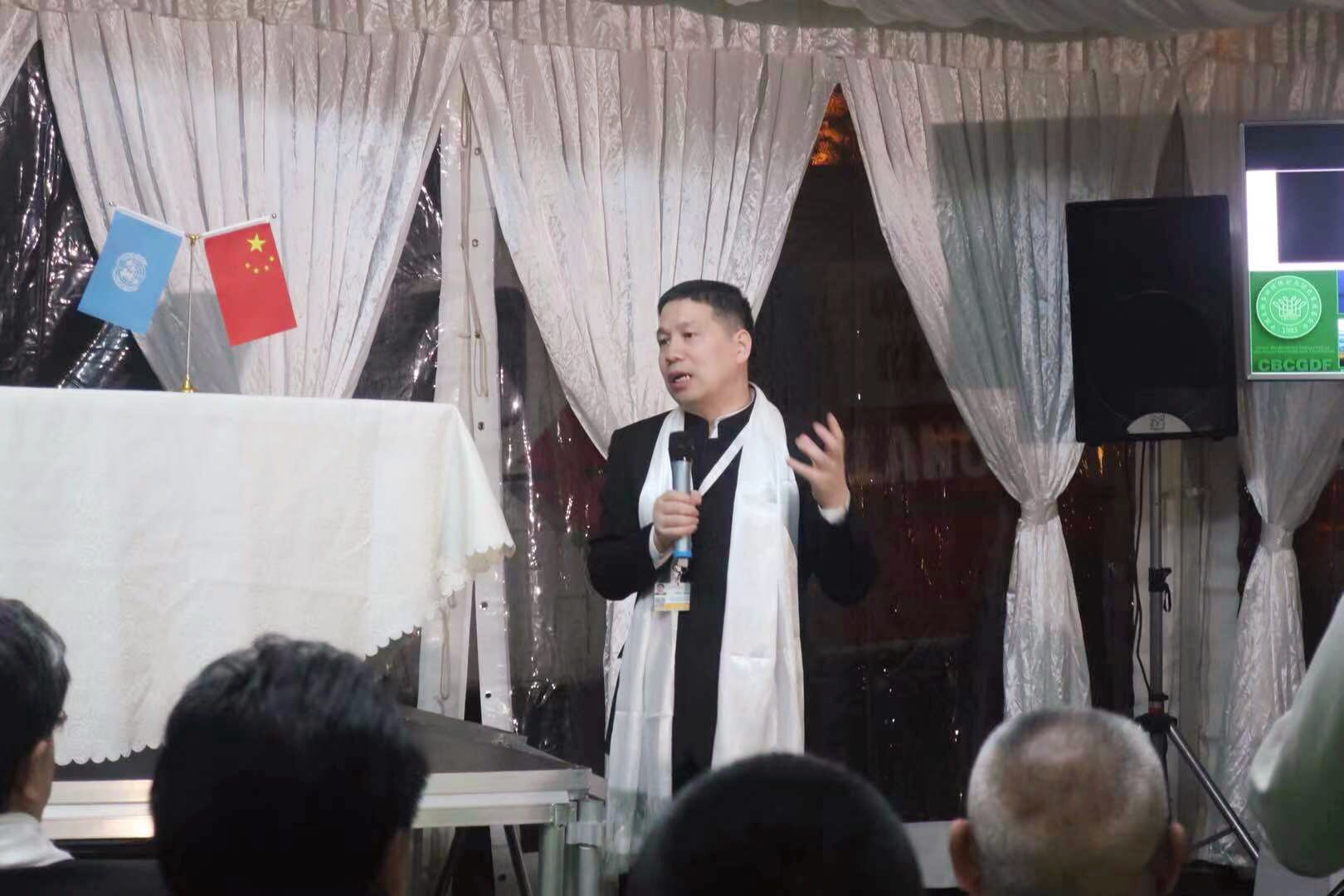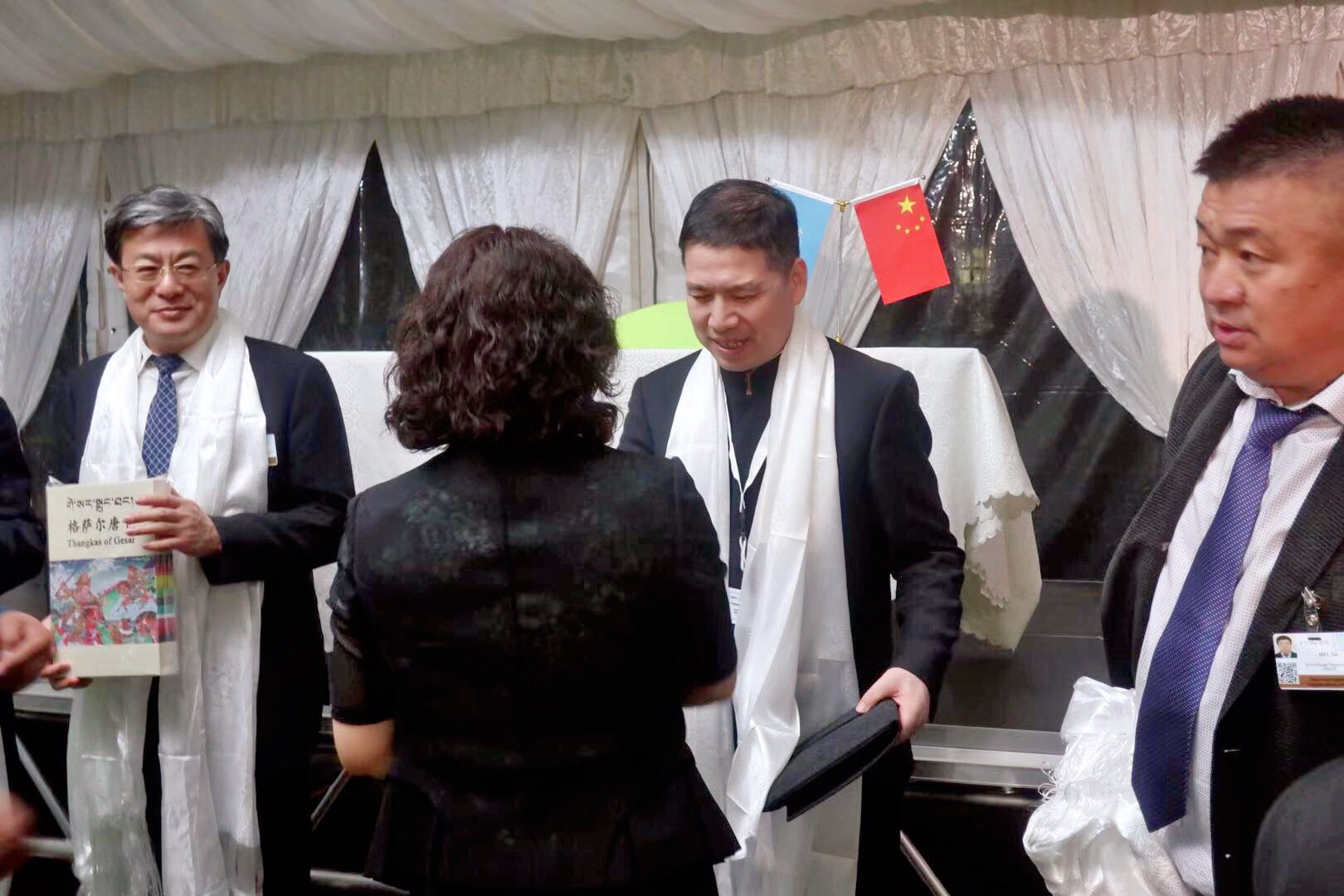On March 11th, at the fourth United Nations Environment Assembly the international meeting "Eco-protection to the World 3rd Pole" was organized by China Biodiversity Conservation and Green Development Foundation (CBCGDF) and co-sponsored by the Chinese People's Association for Friendship with Foreign Countries and the All-China Federation of Industry and Commerce. This meeting was one of a series of activities with the common goal of more effectively responding to Climate Change and orchestrating implementable programs for achieving the UN SDGs.
In particular, the World 3rd Pole side event aimed to share achievements made by Chinese private enterprises in protecting the Worlds 3rd Pole and identify existing challenges as well as motivate further protective actions. In addition to setting up a "World 3rd Pole" ecological environment management technology service platform for international cooperation. Topics discussed ranged from pollution control, desert improvement, health and poverty alleviation, medical waste treatment, conservation, and sustainable development, to other diverse and complex challenges, presently threatening the environment of the World’s 3rd Pole. Government officials, representatives from private enterprises and social organizations, experts, and scholars, who have been working in relevant fields for years, shared and exchanged their respective views and perspectives.
There is little doubt that the Worlds 3rd Pole, (the Tibetan Plateau), is renowned for its unique highland landscape and its philosophy of “Unity between Nature and Mankind”. However recent attention has focused on the region because of a completely different, and much more concerning story.
Attention on the third pole has often mentioned climatic change, causing the mean temperature to rise, and the essential water resources to potentially decline. “However, it is not just the huge temperature change which is a problem in itself, it is also the increase in extreme events in this region that has aroused wide anxiety”, said Dr. Alice Hughes, CBCGDF’s Deputy Secretary-General, when highlighting how important the World 3rd Pole is on a global basis for biodiversity. “It is a region essential for biodiversity, almost 2 billion people who depend upon the plateau for their livelihoods, and millions of people who rely on it for water supply. If we think about eco-regions globally, China and its mountainous regions around the Himalaya is a global hotspot for biodiversity: Of 25 hotspots globally, this region is defined as one of the most important areas in the world and a global priority of conservation.”
“But the fact is that new species of this region are being described every year, and with much of the habitats of the region already degraded or destroyed these species are at risk of extinction", further explained Dr. Alice Hughes on the biodiversity consequences of Climate Change and extreme events facing the Tibetan Plateau in recent years. "Increasing development and climatic changes on the plateau is impacting this region in an unimaginable way. A single flood event is causing desertification over a huge region. For example, a single flood event in SanJiangyuan region has lead to the desertification of one of the main breeding areas for Tibet’s Chiru, and thus threatens the future survival of the species. Understanding the potential impact of these events is challenging, and we need better mechanisms to protect and restore regions to maintain both their species and the ecosystem services they often provide.
The Worlds 3rd Pole is receiving worldwide attention due to the new ecological crisis, or the San Jiangyuan crisis — Rising water levels downstream of Lake Chao (i.e. the central area of the San Jiangyuan national park on the Tibetan Plateau), desertification around the drainage basin, and, noticeably, biological consequences for the highly endangered Tibetan antelopes (i.e. fewer than 75000 worldwide, and live only in China) which depend on this area as one of their three breeding areas.
“CBCGDF, as a non-state actor, is among the first who have noticed the San Jiangyuan crisis and thereafter unswervingly sought solutions to this problem”, said Dr. Zhou Jinfeng, CBCGDF’s Secretary-General, who spoke after Dr. Alice and expanded on the topic of San Jiangyuan.
First complementing Dr. Alice Hughes’s talk on the San Jiangyuan problem, Dr. Zhou said that "Since 2011, in every winter the plateau has been blanketed by sand storms. The Tibetan Plateau has an altitude of 4000-5000 meters, which implies that its thin vegetation cover would be in catastrophe whenever facing such a sand storm. The resulting widespread tendency of desertification has, in turn, led to rising water levels downstream of Lake Chao, when excessive sand becomes deposited there, blanketing and submerging the grazing areas, and posing a major threat to the Chiru's future survival.
Regarding CBCGDF’s remedial actions, Dr. Zhou said: "We have collaborated with the Chinese Academy of Sciences and conducted three scientific field trips to the San Jiangyuan region”. According to Dr. Zhou, these field trips were aimed for a systematic analysis of the problems surrounding this region, such as what are the biological consequences for the Tibetan antelopes in terms of their reproductive activities, what is the effect on the vegetation cover, how about soil quality, what can be said about the lakes, what is the height of the sand dune and what is its moving speed, etc. “But all these will take time and require a rather prolonged investigation period before any definitive research reports can be produced.”
“We now call attention to the emergency the San Jiangyuan region is facing”, said Dr. Zhou emphatically, “environmental conditions of the World’s 3rd Pole are presently under severe threat. Immediate and effective actions are urgently needed. Otherwise, the Lake Chao would become another Lop Nor, the so-called ‘Land of the Dead’. The Lop Nor case is in fact deeply regrettable because it once was similarly endowed with a lush pasture clear waters, just as the Lake Chao”, concluded Dr. Zhou.
It takes only a moment to justify the rationale for protecting the Worlds 3rd Pole. It is the headwater of several major rivers in Asia, and thus supports life across a huge area. It is the Water Tower sustains the livelihood of about 22% of the global population. It is key to the development of the pressure gradient responsible for the Indian monsoon. But no matter how eloquent this evidence, they remain meaningless if no action is taken to deal with the current crisis. One objective of the “Eco-protection to the Worlds 3rd Pole” is to an international platform for cooperation. With our combined attention, CBCGDF wishes for a much brighter future of the World’s 3rd Pole.





(Photo credit: CBCGDF)
By / Lu Lei
